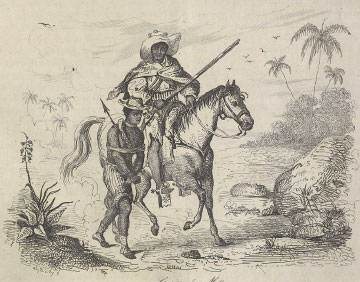Rebellions and Conspiracies

The history of slavery across the Americas is peppered with rebellions and revolts, some small-scale and local, others massive, enormously violent, and highly consequential for the enslaved and slaveholders alike.
European and American authorities used exemplary violence, military force, and punishments to suppress revolts in their midst. The military authorities executed or punished those thought to be involved in rebellions or conspiracies. Rumor of conspiracy could travel rapidly and over great distances among whites, especially at those times in which tangible examples of slave rebellions surfaced, as with the rebellion in Saint-Domingue in 1791 that would become the Haitian Revolution.
Following revolts, colonial governments often passed a flurry of laws aimed at restricting the activities of enslaved people or free people of color in their midst. At such times, few whites rested easily without worrying what their slaves were planning, plotting, or threatening. Though unevenly enforced (as such laws were throughout the period of Atlantic slavery), periods following slave rebellions—local or elsewhere—involved heightened rumor and anxiety among whites, who pressed their leaders to enforce repressive laws already on the books. In this way, rebellions by some enslaved people could lead to periods of greater restriction for most.
Major revolts, involving large numbers of enslaved people, often erupted in the Caribbean islands and in Brazil, where 90 percent of the more than 11 million Africans forcibly migrated to the Americas lived and worked.






